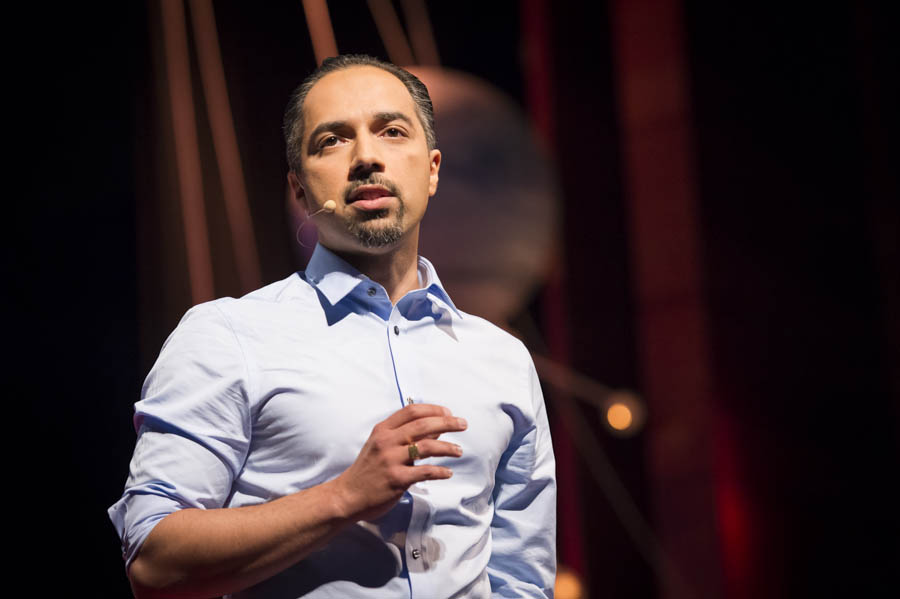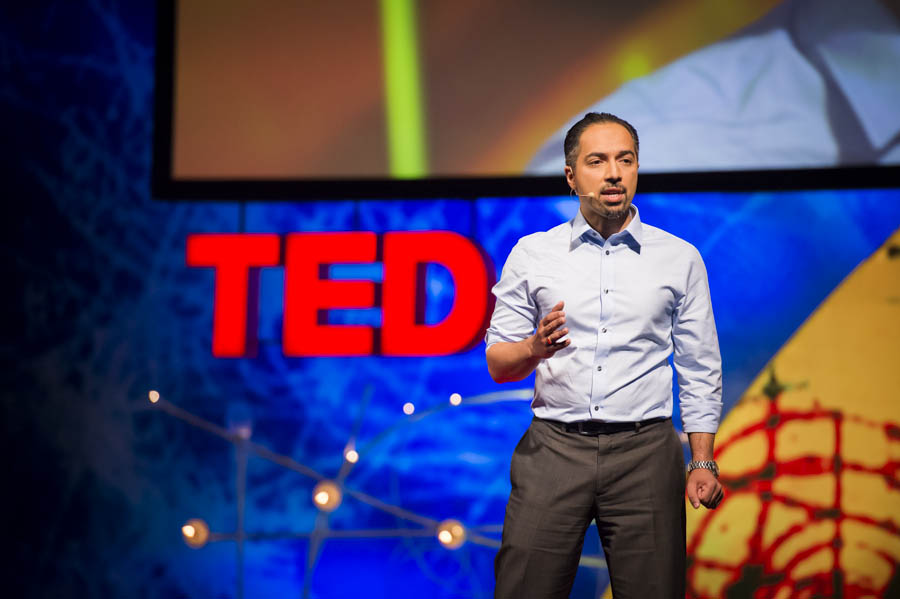Today on the TEDGlobal stage, two days before election in Iran, political scientist Trita Parsi argues that the Israeli-Iranian conflict is resolvable because its nature is geopolitical, not ideological. To illustrate, Parsi quotes an Israeli prime minister: “Iran is Israel’s best friend, and we do not intend to change our position in relation to Tehran.” These words were spoken not by pre-Iranian Revolution ministers Ben Gurion or Golda Meir, but by Yitzhak Rabin, in 1987, when Ayatollah Khomeini was still alive and using his worst rhetoric against Israel.
Today, when we hear threats of war and other high rhetoric between Iran and Israel, we think it’s rooted in one of those unresolvable conflicts as old as the region itself. This is simply not true, says Parsi. Jewish and Iranian friendship goes back to 539 BC, when the Iranians liberated the Jewish people from Babylonian captivity. A third of them returned to Palestine to rebuild the temple in Jerusalem — financed by the Persians. A third of those Jews stayed in Babylonia to become today’s Iraqi Jews. And a third migrated to Persia, where they became today’s 25,000 Iranian Jews — the largest population in the Middle East outside Israel.
So where did Rabin’s statement come from? It reflected decades of security and intelligence collaboration between the two states, born out of the perception of common threats: Both of them feared the Soviet Union and strong Arab states such as Egypt and Iraq. And the collaboration was reinforced by Israel’s Periphery Doctrine, Israel’s security strategy of creating a balance of alliances with non-Arab states in its periphery. But the Shah wanted to keep the relationship secret, and Rabin wore a wig whenever he visited Iran in the 1970s.
Did this clandestine cooperation change with the revolution of 1979? Parsi says that in spite of clear ideological enmity, the geopolitical collaboration lived on behind the scenes because those common threats still existed. When Iraq invaded Iran in 1980, Israel, fearing an Iraqi victory, lobbied Washington to sell arms to Iran, climaxing in the Iran-Contra scandal of the 1980s.
But with the end of the Cold War in 1991 came the end of Iran and Israel’s cold peace, says Parsi. Israel and Iran’s common threats disappeared with the crumbling of the Soviet Union and the weakening Arab states. The balance of power shifted, and Iran and Israel became two of the most powerful states in the region. They began viewing each other as rivals and competitors. This reconfiguration of the geopolitical map is the root of the enmity we see playing out today.
While Iran reached out hoping to improve relations with the US, the US did not respond, preferring to isolate Iran. It was around this time that Iran began to support Palestinian Islamist groups and opposing the Oslo peace process, believing the US would isolate them regardless of policy. Parsi quotes Martyn Indyk of the Clinton administration as saying the Iranians had not gotten it entirely wrong — the US believed that the more peace between Israel and Palestine, the more Iran would be isolated, and the more isolated Iran became, the more peace there would be.
But even in the worst of times, Parsi notes, all sides have reached out to each other — Netanyahu in 1996 to see if the Periphery Doctrine could be resurrected, and a few years later, Tehran sending a proposal to Washington to see whether relations with Israel could be improved. Both bids were rejected. “All sides have never missed an opportunity to miss an opportunity,” says Parsi.
All this is to say that when it served their security interests, Israel and Iran have proven willing to cooperate. More important, geostrategic interests have always prevailed over ideological conflict. This is good news, says Parsi, because it means that neither war nor enmity is a foregone conclusion.
But, Parsi warns, some want war, framing the conflict in an analogy in which Iran is Germany and Ahmadinejad is Hitler — an analogy Parsi says is aimed at eliminating diplomacy. “When you eliminate diplomacy, you make war inevitable.” But we can place our hope in the fact that this conflict is only a few decades old in a history of 2,500 years. Solutions can be found to a geopolitical conflict. And after all, he says, quoting Rabin, “You don’t make peace with friends. You make it with your enemies.”
Trita Parsi’s talk is now available for viewing. Watch it on TED.com »


Comments (4)
Pingback: MAGIC VIDEO HUB | Trita Parsi’s take on Israel warning the United States not to trust Iran
Pingback: Trita Parsi’s take on Israel warning the United States not to trust Iran | TokNok Multi Social Blogging Solutions